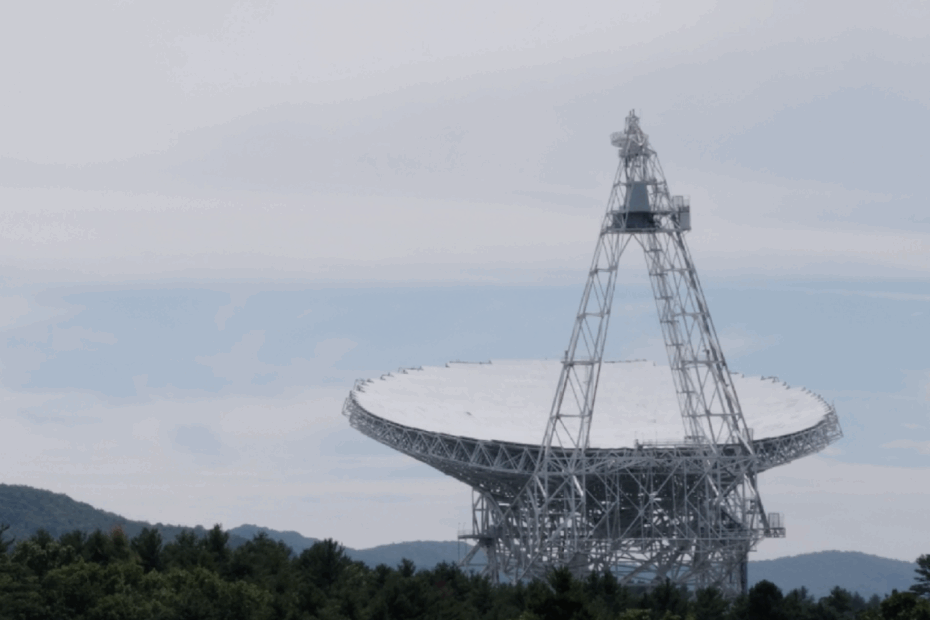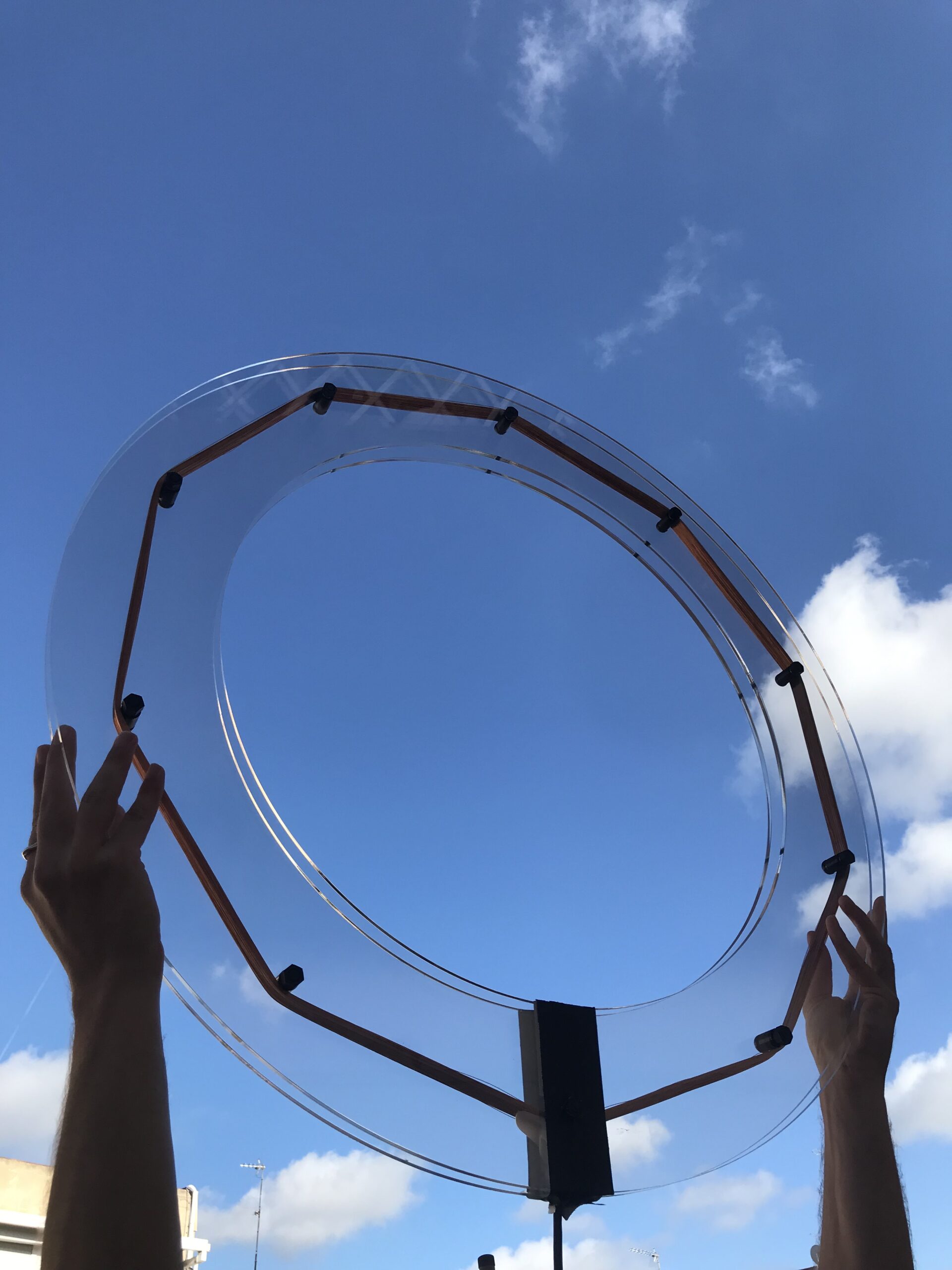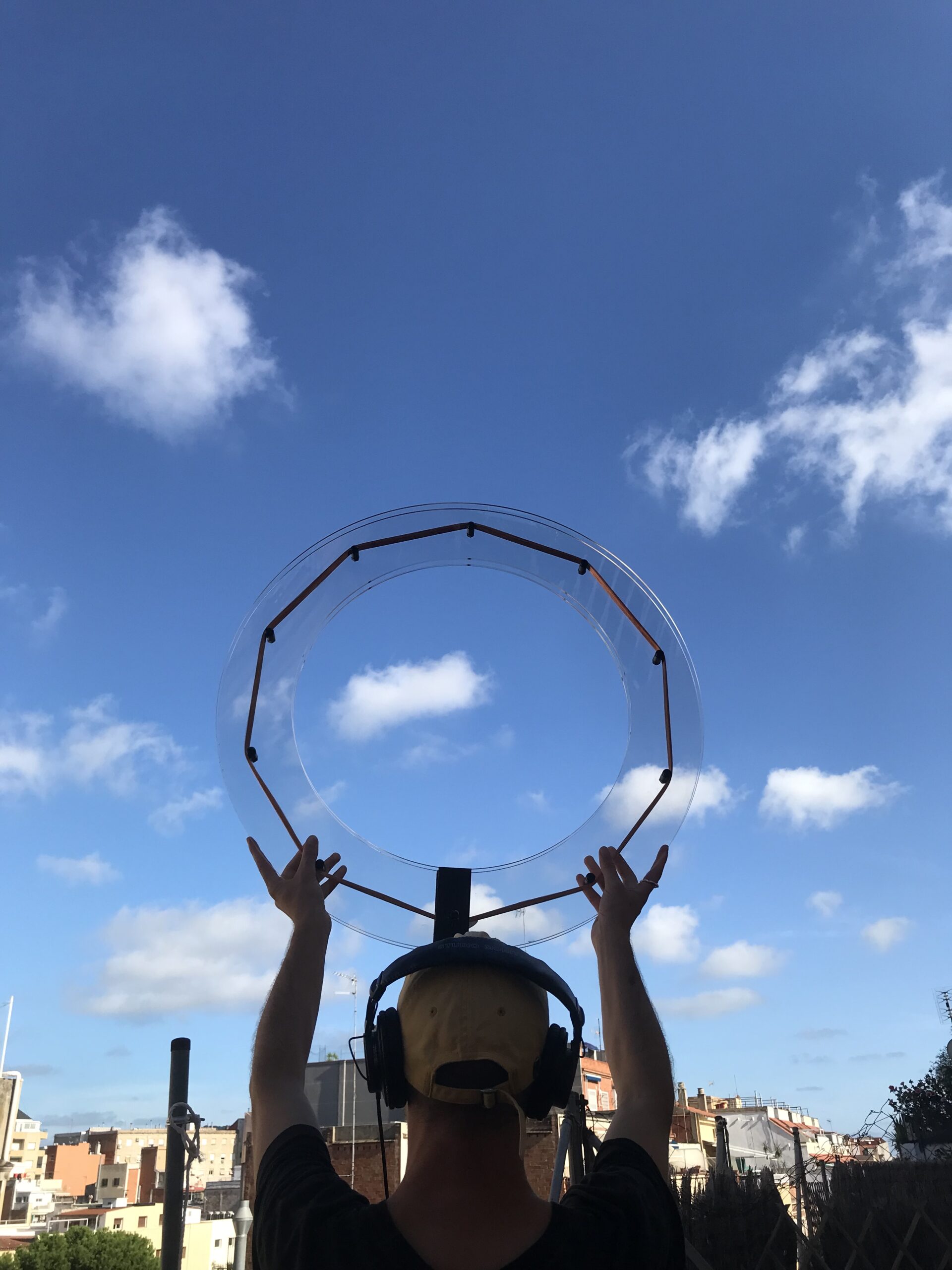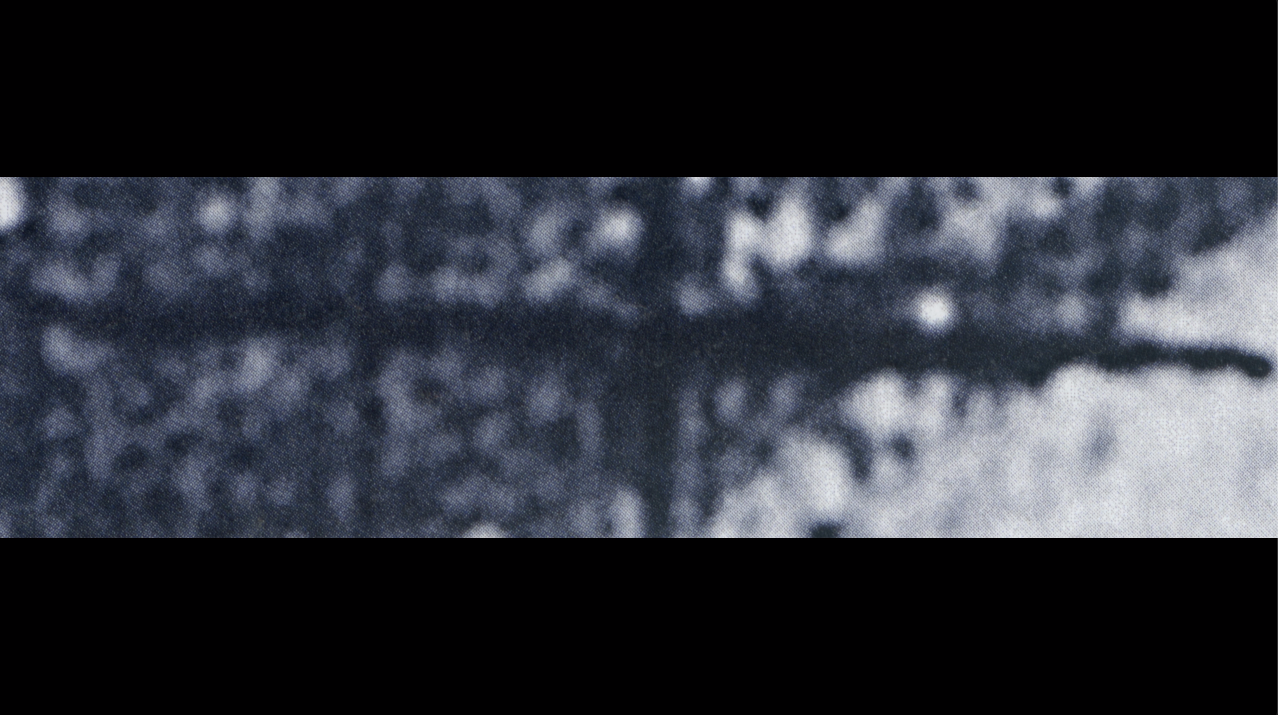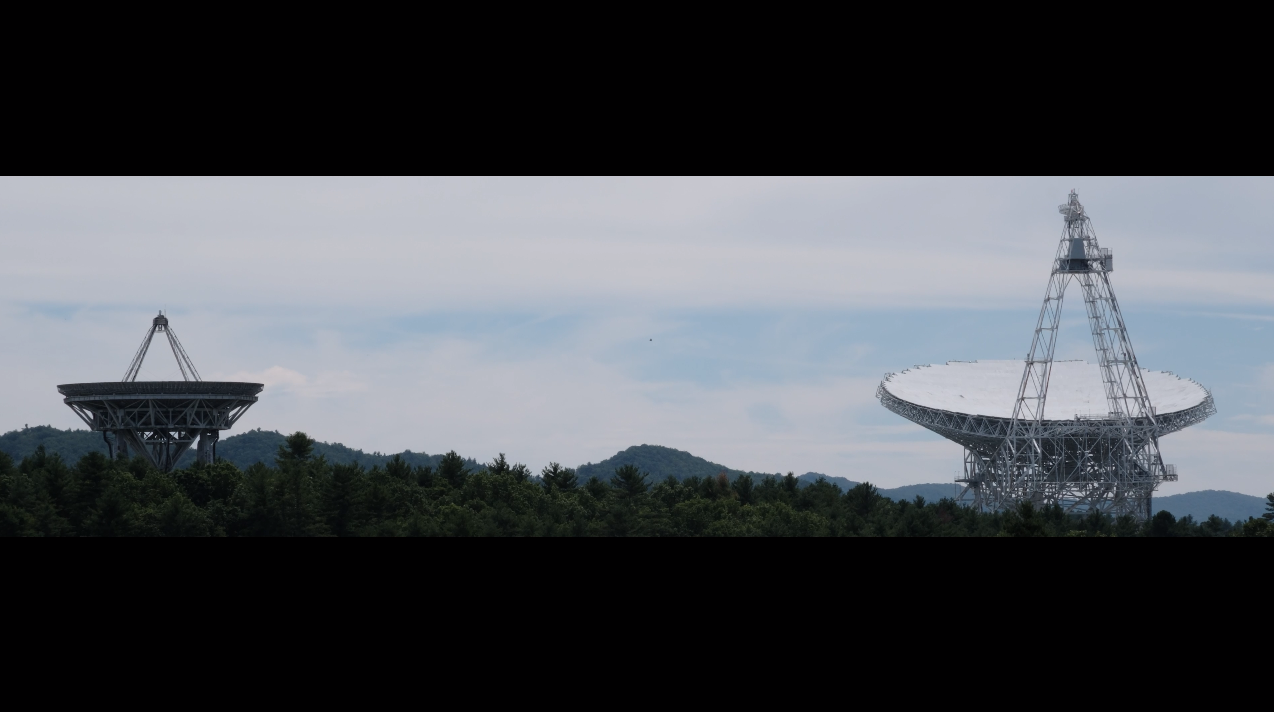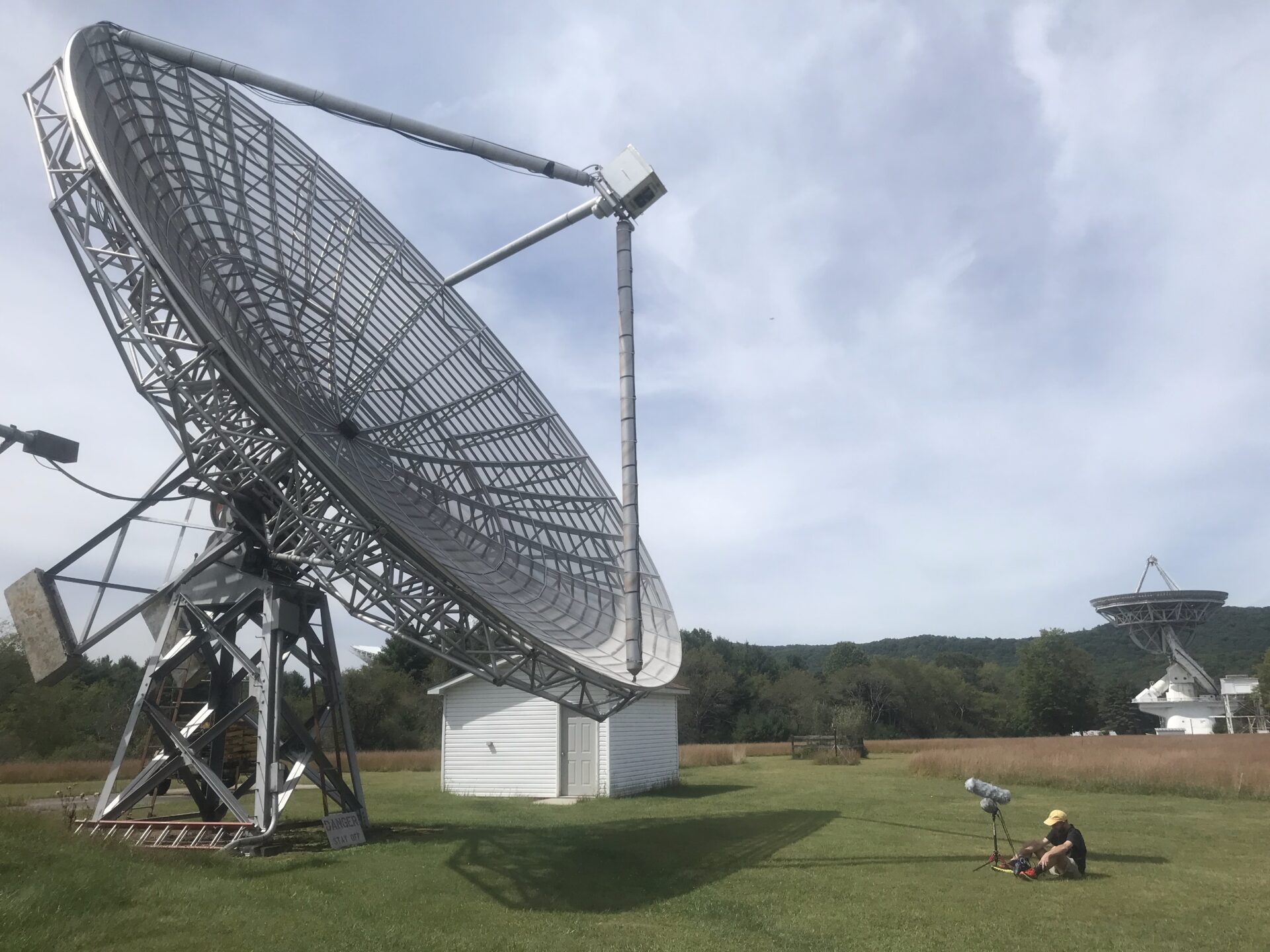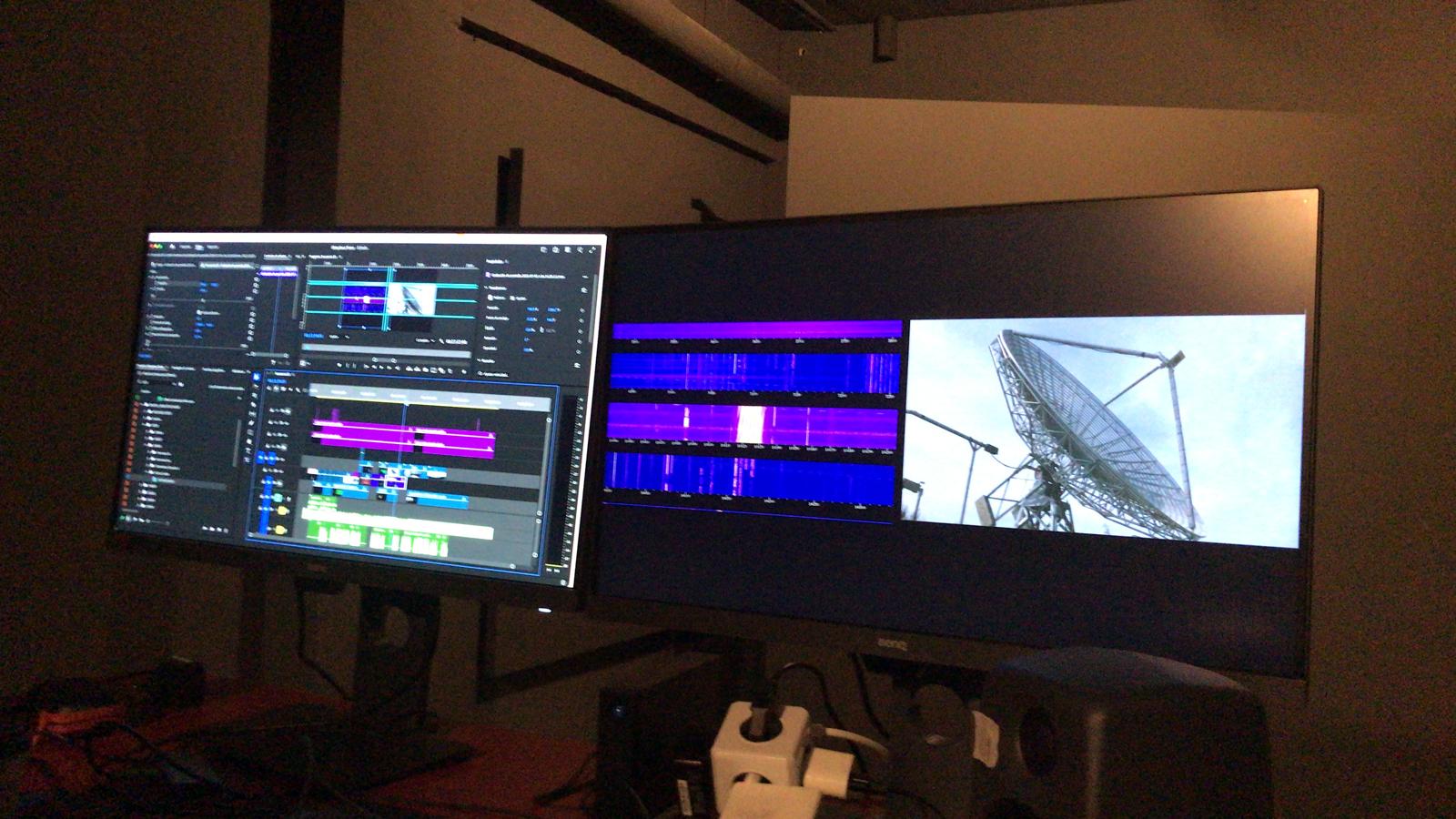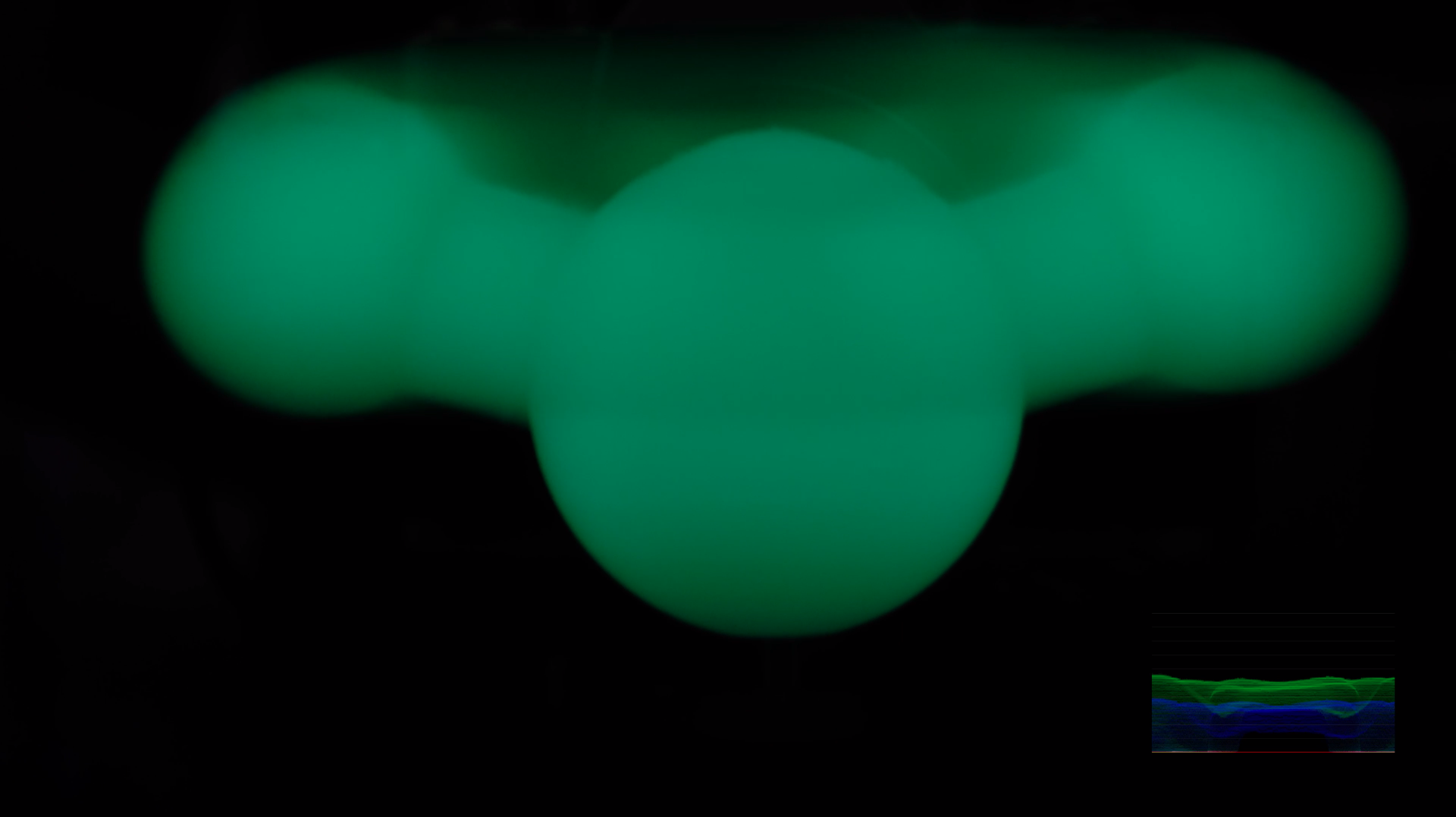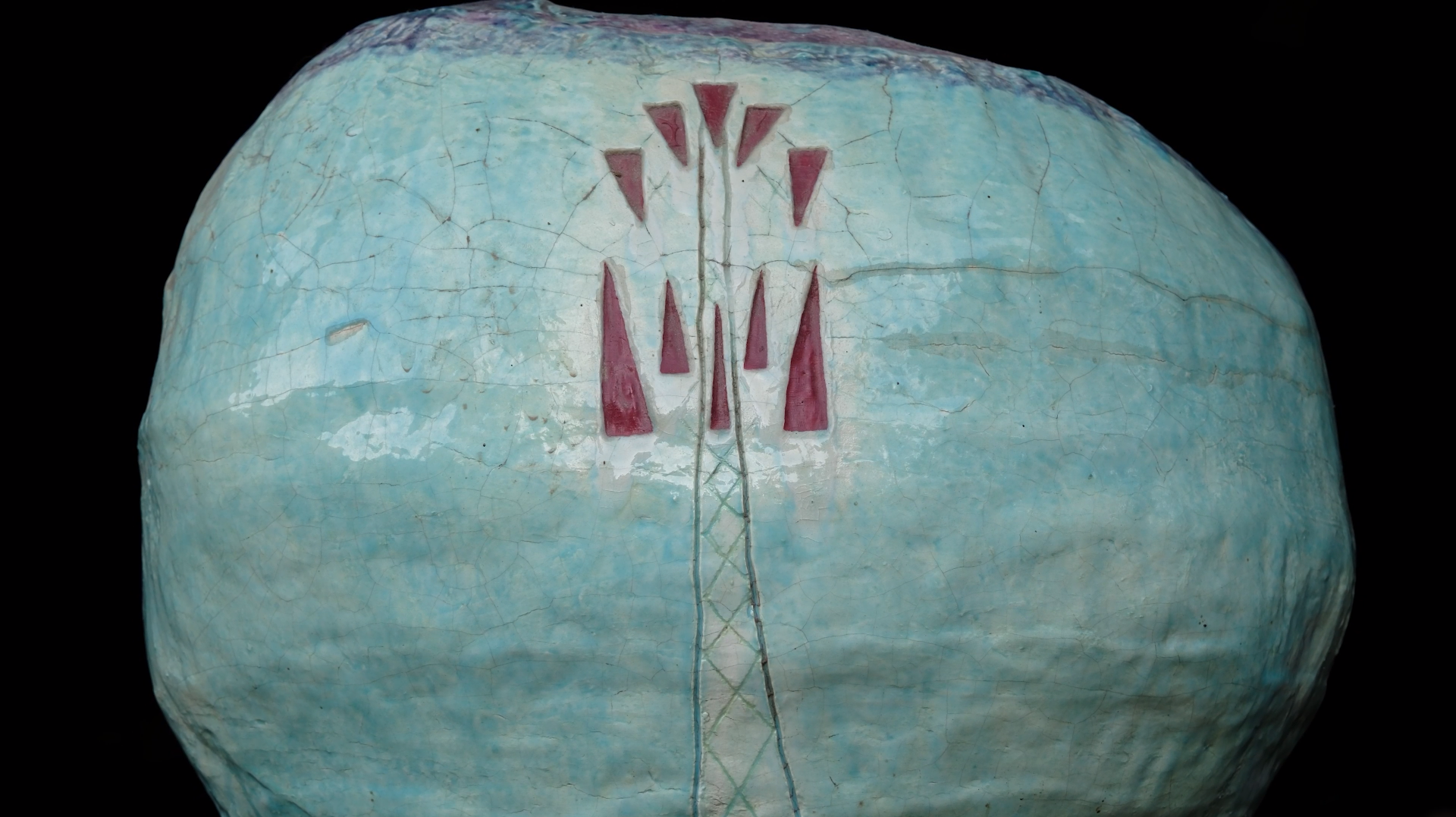+ WHAT?
Explore the somatisation and perception of electromagnetic environments.
+ HOW?
Study the multi-scalarity of electromagnetic noise through technical, epistemic, and aesthetic research and field work.
Everything resonates at a certain frequency. This phrase serves as the leitmotif of Ubiquitous Noise. The project investigates electromagnetic environments—imperceptible yet deeply conditioning the experience of life, both urban and planetary. It engages with ‘noise’ as a concept that spans multiple scientific, technical, and aesthetic fields, always situated in a liminal zone between epistemology and perception. It traces electromagnetic noise through various domains: cosmic background radiation detected by radio telescopes, neural background noise in neuroscience, and the electromagnetic pollution of modern communication infrastructures. The final installation brings together a spatialized sound environment, a visual essay tracing the multi-scalarity of electromagnetic signals, and a live antenna that integrates the electromagnetic presence of the exhibition space itself. Together, these elements immerse visitors in an expanded field of listening and perception.
Collaborations
— Albert Tarrats Serra (Radio Macba): artist and sound designer specialising in the sonification of electromagnetism and the manufacture of electromagnetic antennas.
— Green Bank Observatory (West Virginia, USA): Observation of the Green Bank Telescope and interviews with scientists and electro-sensitive community members. Scientists: Jim Jackson, Brenne Gregory, Will Armentrout, Daniel Bautista, Paul Vosteen. Community members: Neil, Levy, Dianne, Nelly, Ivanka.
— Brain and Emotion Lab (Maastricht University, Netherlands): Access to a 7-Tesla MRI and interviews with Beatrice de Gelder, Giuseppe Marrazzo, Votja Smekal.
Electromagnetic listening, urban noise, invisible ecologies, sonic philosophy, DIY antenna, phenomenotechnique, noise as knowledge
The immersive audiovisual installation developed during the project brings together three interconnected elements:
1. A specialised, randomised electromagnetic sound environment created using different data sources: astronomical, neural, technical and natural radio. These different data come from scientific observations of electromagnetic signals that have subsequently been converted into sound. The environment becomes a dynamic, multi-scale space that envelops the viewer, offering a physical experience of electromagnetism originating from the universe, neural activity, and the technical infrastructures and devices present in everyday environments.
2. An audiovisual essay (17 min) that combines images of the Radio Quiet Zone, the Green Bank astronomical observatory facilities, and the data visualisation programmes used by scientists, alongside explanations of what noise is in each of the sciences, as well as for the community of people who suffer from electro-sensitivity.
3. VLF Electromagnetic Antenna (DIY). A portable electromagnetic antenna was designed and built during the project, capable of capturing Very Low Frequency (VLF) emissions. This custom-made device accompanied the researcher across various environments, translating electromagnetic signals into sound. The antenna operates as a humble analogue to the complex devices used in astrophysics and neuroscience—reframing technical environments through a critical, accessible lens. Beyond being a technical object, this DIY device, in the installation, serves to bring the technical dimension of the installation itself, as well as the viewers’ portable devices, into the exhibition experience. In this sense, it functions as an element of real time and recursion.
Device-Making Guides
A step-by-step guide to building a DIY VLF Electromagnetic Antenna with a coil and a jack cable is presented below.
Materials Needed:
– Enamel-coated copper wire (20–28 AWG)
– 3.5mm jack or XLR plug (male)
– Shielded audio cable (or non-shielded, though shielded reduces noise)
– Plastic, wooden, or cardboard form for winding coil (10–30 cm diameter)
– Soldering iron and solder
– Multimeter
Instructions:
1. Wind 100–300 turns of enamel-coated wire around the form. More turns increase sensitivity but may also increase noise.
2. Strip the enamel insulation from both ends, leaving 10–15 cm leads.
3. Use a multimeter to check continuity.
4. Solder the coil ends to a 3.5mm jack (Tip = one end, Sleeve = ground). For stereo plugs, connect both Tip and Ring.
5. Insulate with tape or heat shrink tubing and secure connections.
6. Test by plugging into a recorder with good preamplification.
Tips: Rotate the coil to find the best reception angle. Avoid urban areas to reduce interference when recording natural radio.
Design Methods & Frameworks
This project involved fieldwork, including visits to two scientific research centres that use technologies to detect electromagnetic activity in the universe and the brain. From an STS (Science and Technology Studies) perspective, the discursive forms of science were observed, along with the methods of observation and the technical devices employed. The basic question ‘What is noise?’ served to shift the conversation from the known to the unknown, from certainties to uncertainties, placing at the centre of scientific discourse both the materiality of the media used for research and the role of randomness evident in the objects of study. In parallel, the discourse of the electro-sensitive community—more personal and affective in nature—was also addressed. All sound and visual material was subjected to an extended process of epistemological research to avoid constrictive and deterministic dualisms, thereby opening possibilities for exploring noise beyond the binary of objectivity vs. subjectivity, science vs. parascience, and so forth. The installation does not aim to explain electromagnetism but rather to expose the viewer to a multi-scale experience of the ubiquitous noise that surrounds and permeates human existence. To this end, a principle of sonic and visual experimentation was established, modulating across the electromagnetic spectrum to create the sensation of navigating a wave.
The electromagnetic antenna has been used throughout the project to investigate electromagnetic fields. It captured natural radio signals in the Radio Quiet Zone, emissions from scientific instruments at Green Bank Observatory, and MRI-related electromagnetic activity at the Brain and Emotion Lab. These recordings demonstrate the diversity of noise ecologies across environments. For the exhibition at BASE, a one-metre diameter antenna was fabricated—the largest yet—allowing not just the capture of device frequencies but the ambient electromagnetic environment itself.
Lessons learned:
By juxtaposing scientific precision and DIY methods, the project reveals that ‘noise’ is not merely technical residue but an epistemological gateway. Instruments both measure and co-produce phenomena. Through expanded listening and speculative experimentation, Ubiquitous Noise demonstrates that noise is a productive space of knowledge and perception. At the Green Bank Observatory, the immense scale and sophistication of the radio telescope foregrounded the institutional and infrastructural frameworks within which science operates. At Maastricht, the 7T MRI revealed how neuroscientific knowledge depends on technical mediation, with ‘noise’ understood both as a limitation and as a source of interpretive richness. By contrast, the DIY antenna introduced an alternate scale of engagement—one that foregrounds accessibility, immediacy, and the subjective encounter with electromagnetic environments. These contrasts have reinforced the importance of embracing multiple registers of knowledge production. Another lesson is the pedagogical potential of DIY practices: workshops demonstrated that non-experts could quickly build antennas and, through them, experience electromagnetic ecologies in a direct and embodied way.
Artistic, Social, Technological, and Urban Benefits:
Ubiquitous Noise makes visible the invisible forces that shape contemporary environments. Combining philosophy, fieldwork and artistic speculation, the work highlights the saturation of electromagnetic infrastructures in urban life. It creates a space where scientific, social and artistic perspectives converge, allowing multiple disciplines to engage in dialogue through the shared issue of noise.
Adaptability / interoperability:
The DIY antenna is easy to replicate and adapt to various contexts: artistic, educational or scientific. The critical methodology is transferable to other disciplines, such as media archaeology, sound studies, neuroscience and spatial arts. The modular design of the installation allows for its implementation in museums, public interventions or educational environments.
Impact
Fieldwork has been crucial to the development of the project. Interviews with scientists, observation of their working methods, and the technical devices they use to investigate signals and noise have enabled an understanding of the key role that electromagnetism plays in scientific study, showing that it is not only a medium but also an epistemic object in itself. The interviews and dialogue with the electro-sensitive community have been critically valuable, providing insights for developing an installation that renders the somatisation of electromagnetic signals perceptible. Building on lessons from research and fieldwork, progress has been made in sound and visual experimentation. Decisions include the need to randomise and spatialize the sound environment for a more immersive experience, as well as the development of an electromagnetic antenna that integrates the installation into the environment, creating a negative recursion loop analogous to the experience of people with electro-sensitivity.
Project Wiki
